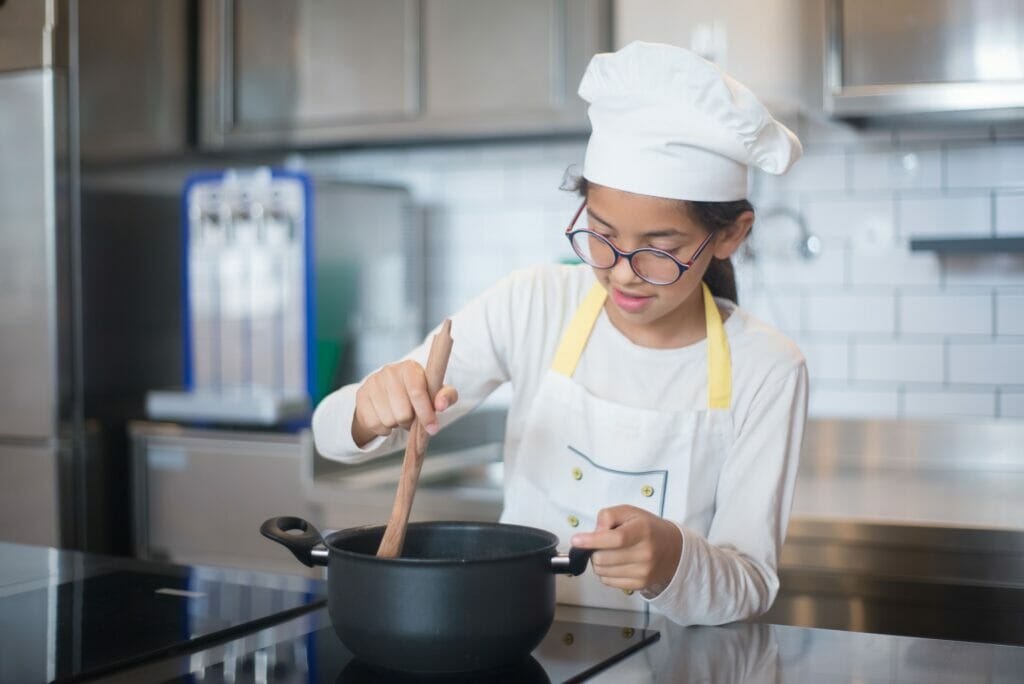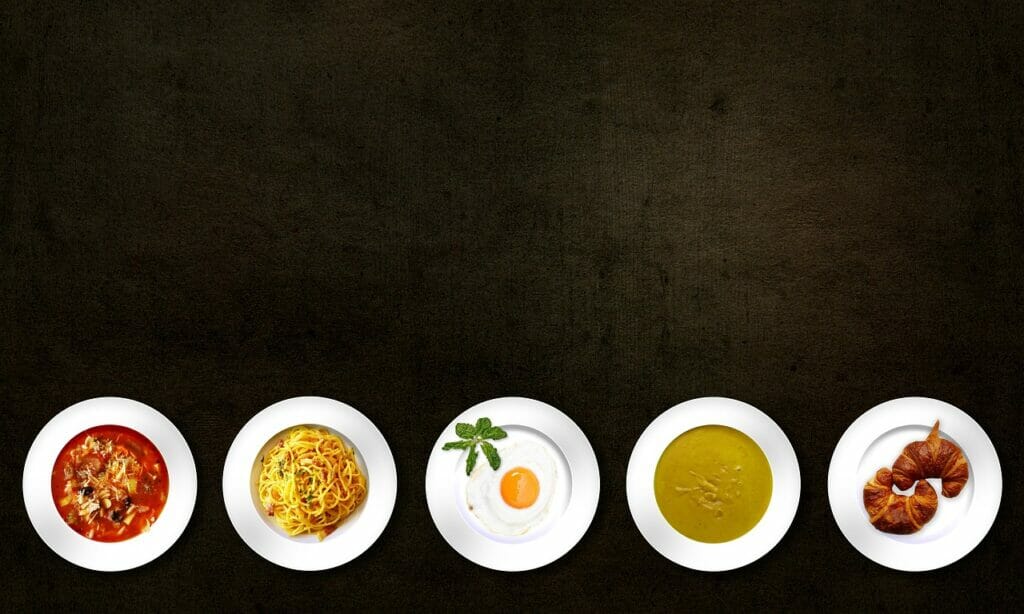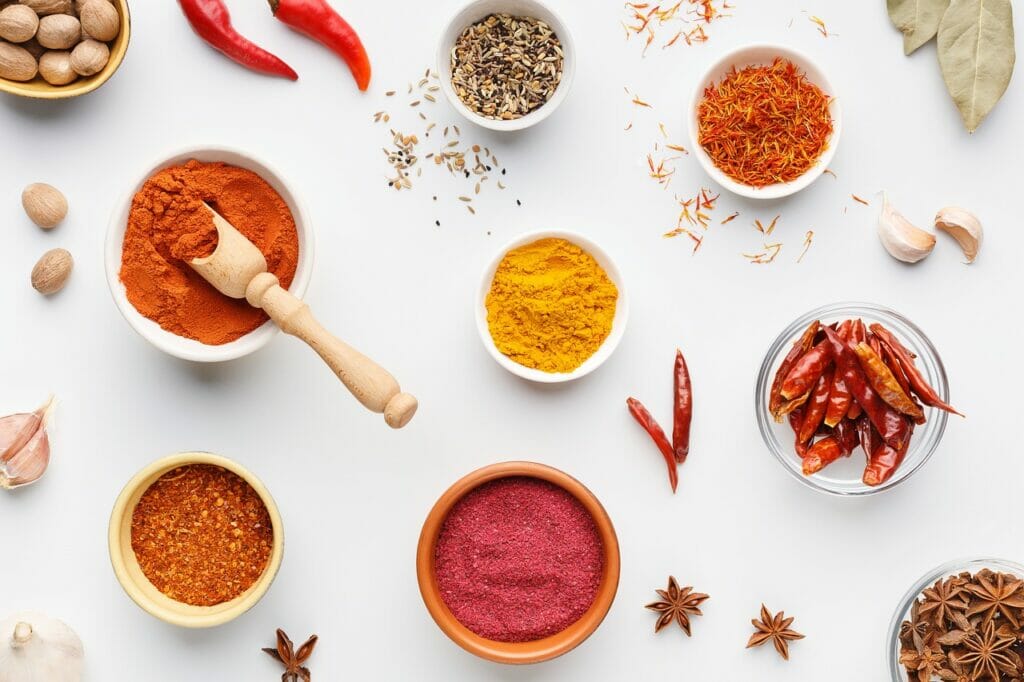Improving your knife skills or simply learning how to use professional knives is a crucial step in becoming a confident and competent cook. With the right techniques and some practice, you’ll be slicing and dicing like a pro in no time. No ingredient will resist you that is for sure! In this article, we’ll go over the basics of knife safety and the 5 Simple Knife Cutting Techniques You Will Ever Need.
The 5 Simple Knife Cutting Techniques You Will Ever Need are:
Knife Safety
First of all let’s talk about safety. Always use a sharp knife, as a dull blade can be more dangerous to work with. I have made this mistake in the beginning when I thought it would not make any difference. I was thinking that duller knives would be actually safer, in case I cut myself. But it is all the opposite – sharp knife is key to success.
Always keep your fingers tucked under and away from the blade as you chop and be sure to keep a firm grip on the handle.
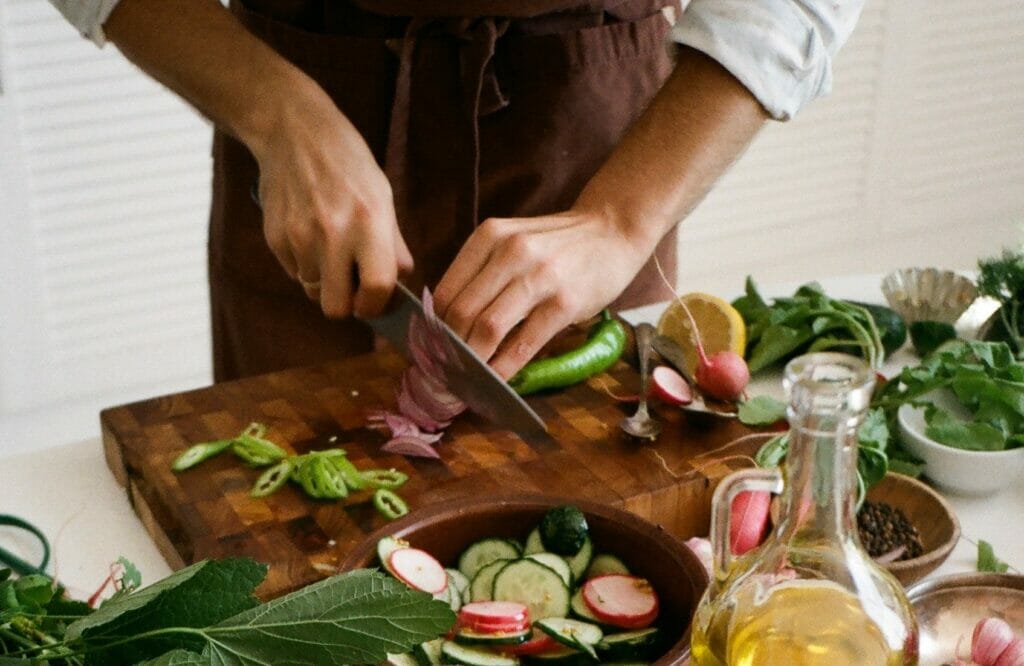
It is going to take you some time to practice hiding your fingers and keep them tucked as it is not a natural movement for the beginners. However, with time it will be to most natural move your hand will do when chopping or dicing.
Before going any further, please make sure that you have the right knife for the right job. You can find an overview of the only 5 knifes you will ever need.
Now that you have the right tools, let’s talk about the different cutting techniques you can use.
1. Dicing
Dicing is a technique for cutting an ingredient into small, uniform cubes. To dice an ingredient, first slice it into thin, even planks. Then, stack the planks and cut them into thin, even strips. Finally, stack the strips and cut them into small cubes.
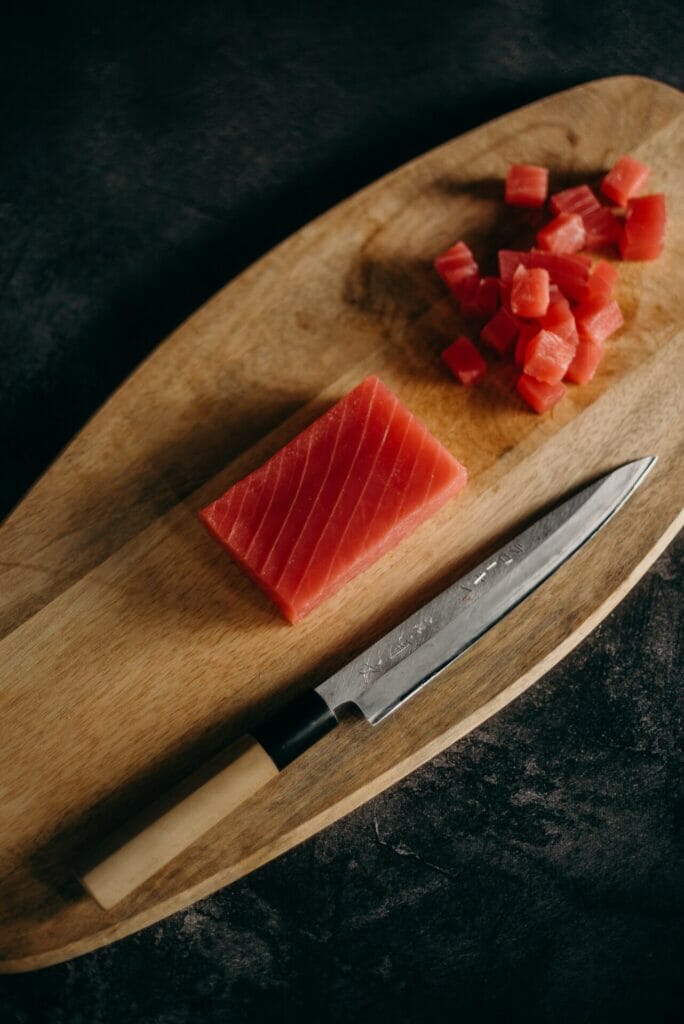
Dicing is a useful technique for evenly distributing ingredients in a dish, as well as for increasing the surface area of the ingredient, which can help it cook more evenly.
2. Mincing
Mincing is a technique for cutting food into very small pieces, often using a rocking motion with the knife. To mince an ingredient, finely chop it, then scrape the knife across the chopped pieces in a back and forth motion.
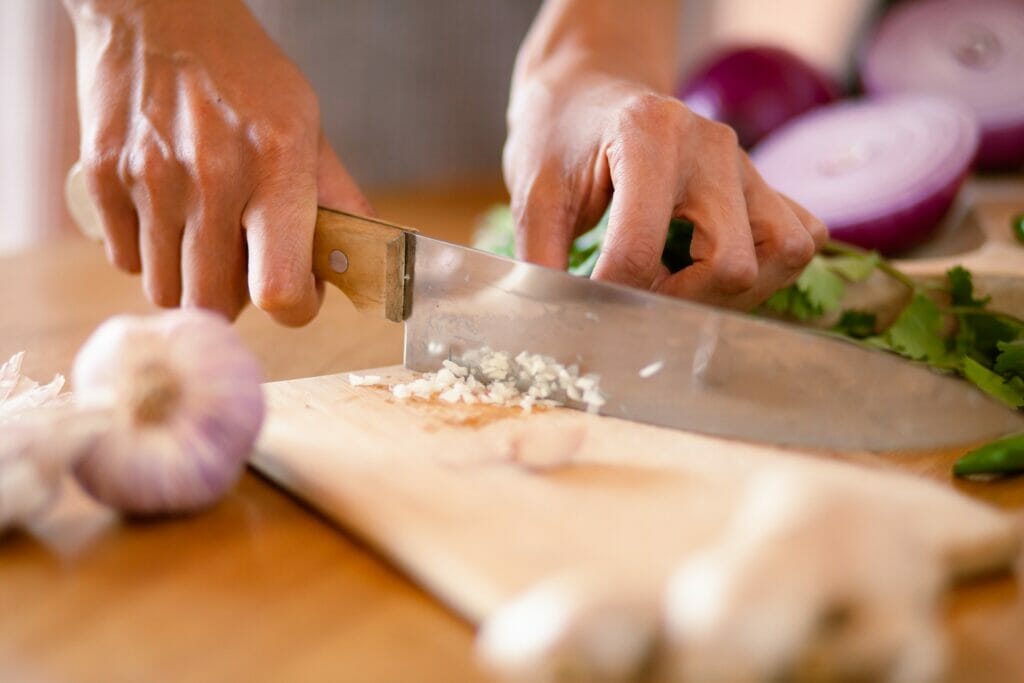
Mincing is a useful technique for breaking down ingredients into small pieces, which can help them cook more evenly and incorporate more easily into a dish.
Mincing is often used to prepare ingredients like garlic, onions, herbs, and spices, as it helps to release their flavors and aromas. It is also useful for breaking down tougher ingredients like meats or seafood, as it helps to tenderize them and make them easier to chew.
3. Chiffonade
Chiffonade is a technique for cutting leafy greens or herbs into thin strips. To chiffonade basil or spinach, stack the leaves, roll them tightly, and slice them into thin strips.
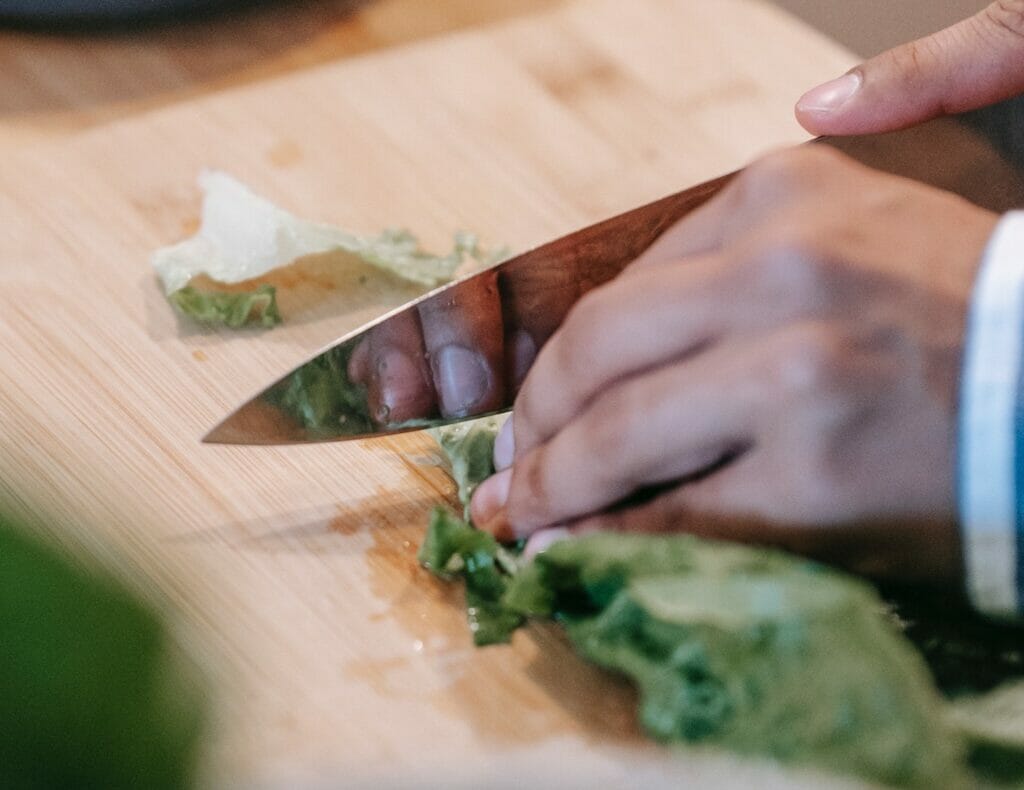
Chiffonade is often used to prepare ingredients like basil, spinach, lettuce, and other leafy greens. It is also useful for cutting herbs like parsley or cilantro into thin strips for use as a garnish or for adding flavor to a dish.
4. Julienning
Julienning is a technique for cutting an ingredient into thin, matchstick-like strips. To julienne an ingredient, slice it into thin planks, then stack the planks and cut them into thin strips.
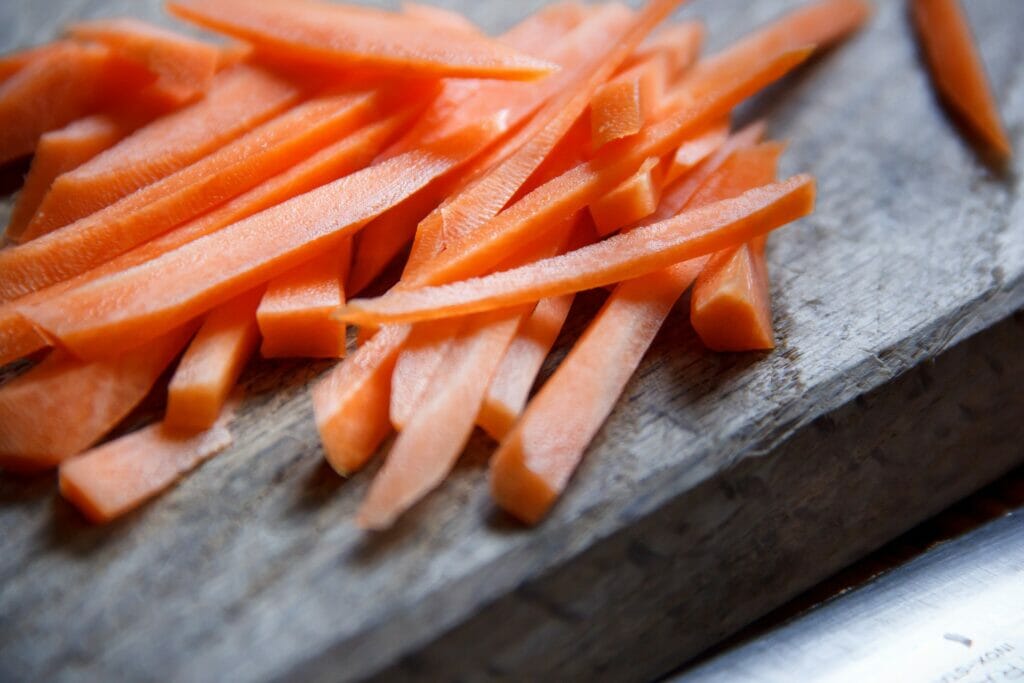
Julienning is a useful technique for adding a decorative touch to dishes, as well as for increasing the surface area of the ingredient, which can help it cook more evenly.
5. Brunoise
Brunoise is a technique for cutting an ingredient into tiny, uniform cubes. To brunoise an ingredient, slice it into thin planks, then stack the planks and cut them into thin strips. Finally, stack the strips and cut them into small cubes.
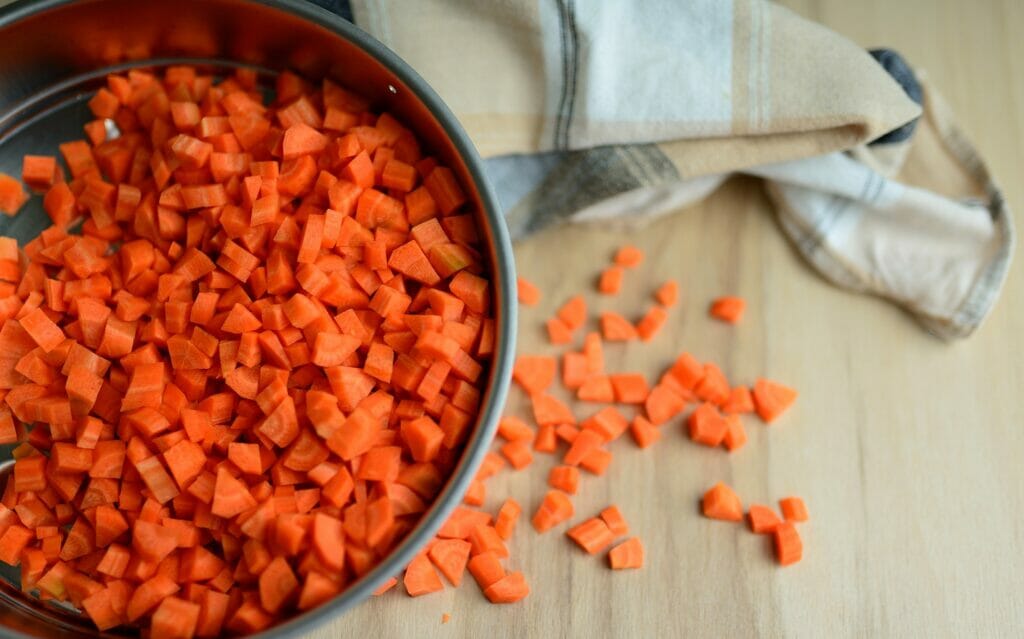
The brunoise cut is typically used in soups, sauces, and other dishes where a small, even dice is desired. It is also sometimes used as a garnish or to add texture and flavor to dishes.
Now that you have the basics down, it’s time to get practicing! Start with softer ingredients like onions and tomatoes, then work your way up to tougher items like carrots and squash. With some practice and patience, you’ll be a knife skills pro in no time.
Onions are best to practice with. My daughters put swimming goggles to do so to avoid any crying 🤣, but it is just easier to simply rinse your knife with water before chopping.
To chop an onion for example, slice off the stem end (not the root!), then slice the onion in half from root to stem. Peel off the skin and discard, then place one half of the onion flat side down on your cutting board. Make horizontal cuts about a quarter inch apart. Do not go for the root but stop just before to keep it intact. Then make vertical cuts to dice the onion. Discard the root. For a finely diced onion, make your cuts even smaller.
In addition to practicing your cutting techniques, it’s also important to pay attention to the ingredients you’re working with. Different ingredients require different approaches, and it’s important to be mindful of how you handle them.
For example, softer ingredients like tomatoes or avocados can be more delicate and prone to bruising, so be gentle when handling them. Harder ingredients like carrots or potatoes may require more force to chop through, so be sure to use a sharp knife and a steady hand. And always be mindful of any allergies or sensitivities you or your guests may have, and be sure to properly wash and sanitize your cutting board and knives after handling raw meats or seafood.
With these tips in mind, you’ll be well on your way to mastering proper knife skills and becoming a confident and competent cook. Don’t be afraid to experiment and try new techniques, and always be sure to follow safety guidelines to keep yourself and your kitchen safe. Happy chopping!
I hope this article helped you understand the 5 simple knife cutting techniques. I also advise you to check our article on The 5 Ultimate Kitchen Knives You’ll Ever Need or 17 Cooking Methods You Need To Elevate Your Meals Now. They will definitely help you complete your first essential steps of learning how to become a better cook.
If you liked this article, then please follow EasyKitchen.me on Twitter, Facebook and Instagram for more news and tips on how to become a better cook.

